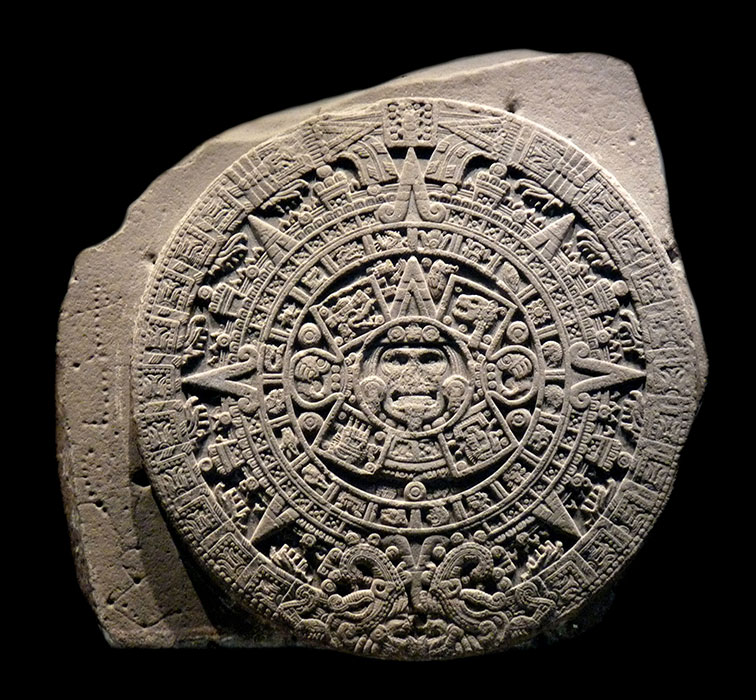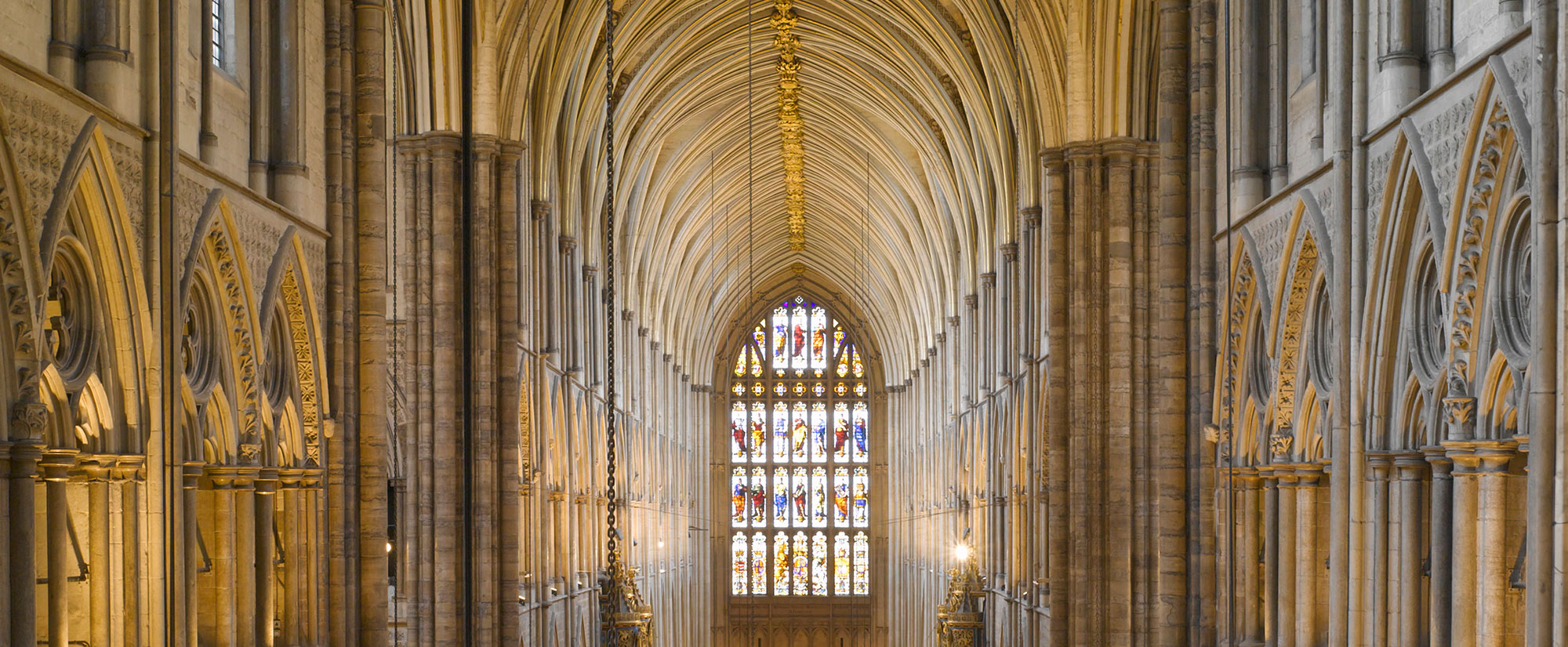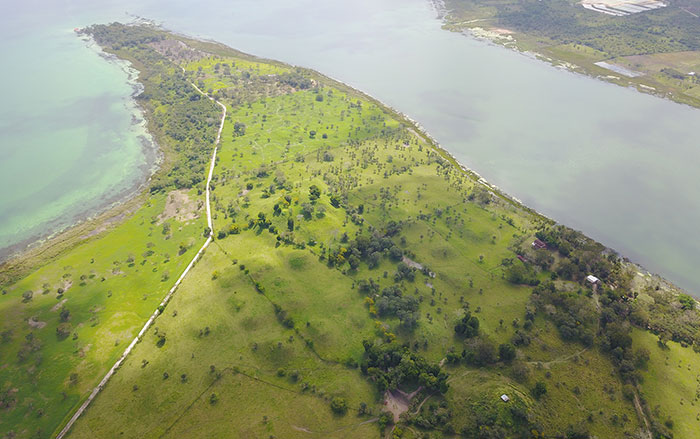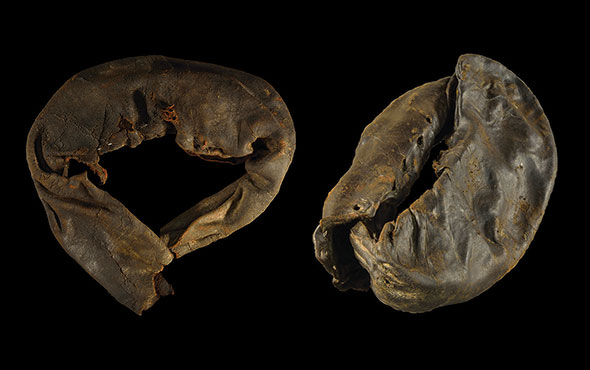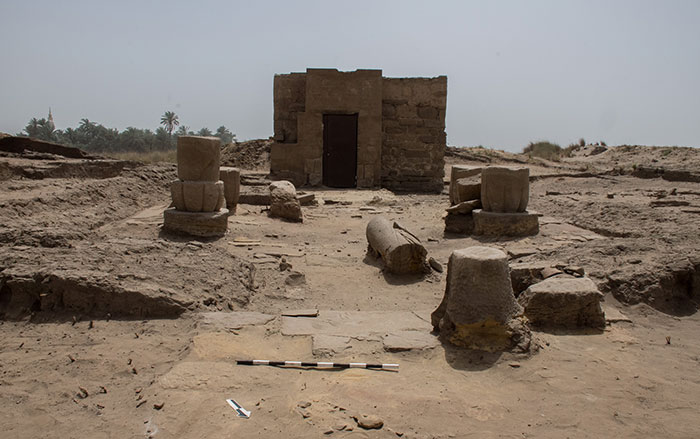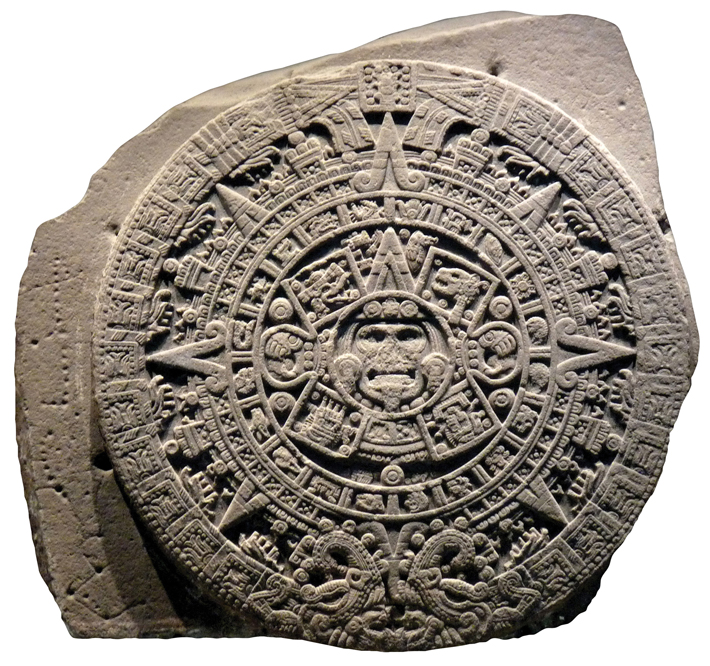
A massive disk of intricately carved stone looms over a gallery in Mexico City’s National Museum of Anthropology. The stone has long been an emblem of Mexican identity. Commissioned by the Aztec ruler Moctezuma II (r. 1502–1520), the nearly 12-foot-wide stone was completed during his reign, in about 1511. Eight years later, when Spanish conquistadores saw it atop a platform in the Aztecs’ central temple, the Templo Mayor, in the capital city of Tenochtitlan, one described it as “round, like a figure of the sun.” When the Spaniards leveled the capital, the stone disappeared, only to be rediscovered in 1790 beneath the city’s main plaza, the Zócalo, a block from where the conquistadores had seen it.
The meaning of this 22-ton disk of volcanic basalt has been subject to a variety of interpretations. The first article written about it in 1792 suggested that it functioned as a clock or sundial. Most researchers have concluded that the figure at the stone’s center represents an Aztec deity, possibly the sun god Tonatiuh—and most still do. But now archaeologist David Stuart of the University of Texas at Austin has a provocative new theory about the central figure. He presented it in the magazine Arqueología Mexicana, and his reading of the famous artifact has set off debate among scholars of ancient Mexico in the magazine’s pages and beyond.
Citing iconic messages on the stone and comparisons to other monuments, Stuart suggests the figure is Moctezuma II himself, represented as the sun god. “People would have seen it as a depiction of the ruler, with the face of the king and the face of the sun being one and the same. The overlap between kings and gods was very important to the Aztecs,” says Stuart. He notes that a glyph above the face reads “One Flint,” the name for the year in which the god Huitzilopochtli was believed to have migrated from his mythic homeland to the central valley of Mexico at the dawn of the Aztec state. Another glyph, slightly to the left, represents a xiuhhuitzolli, a diadem or headdress, worn by the Aztec ruler himself. Stuart believes the two glyphs, taken together, send a clear message of royal power and identity. “It’s a portrait of the deified king. Aztec commoners would have read ‘This is the king. The king is a god.’ Seeing the central figure as a portrait makes it a very historical and political monument.”
Other Mesoamerican experts, however, disagree. Archaeologist Eduardo Matos Moctezuma, former director of the Templo Mayor excavations, has argued that Stuart’s interpretation is groundless. He writes in Arqueología Mexicana that Stuart has misread the glyph that he believes represents the royal headdress, which, he says, is, instead, part of a longer glyph with no direct relation to the ruler. Moreover, the man in the center of the stone has a tongue-like sacrificial knife hanging out of his mouth. According to Matos, no other portrait of an Aztec ruler has such an attribute.
Patrick Hajovsky, a Southwestern University archaeologist, also disputes Stuart’s theory, saying that although the glyph to the left of the figure might indeed be that of Moctezuma, that would not mean the figure depicted is the king. “By that logic, then, the central figure could just as well be Huitzilopochtli, the god whose name appears in the innermost circle,” he says. He observes that in other works featuring Moctezuma, he never appears in the center of the sun, “but rather to its side, making offerings.”
Stuart admits that by arguing that the stone depicts an actual person—not a god—he is, in a way, demystifying it. “They would have seen it as a person, and I guess that brings it down to earth,” he says. Yet the face is more than just a portrait of Moctezuma. “It plays off multiple identities that revolved around kings and deities,” he says. “The face is several things at once.”



